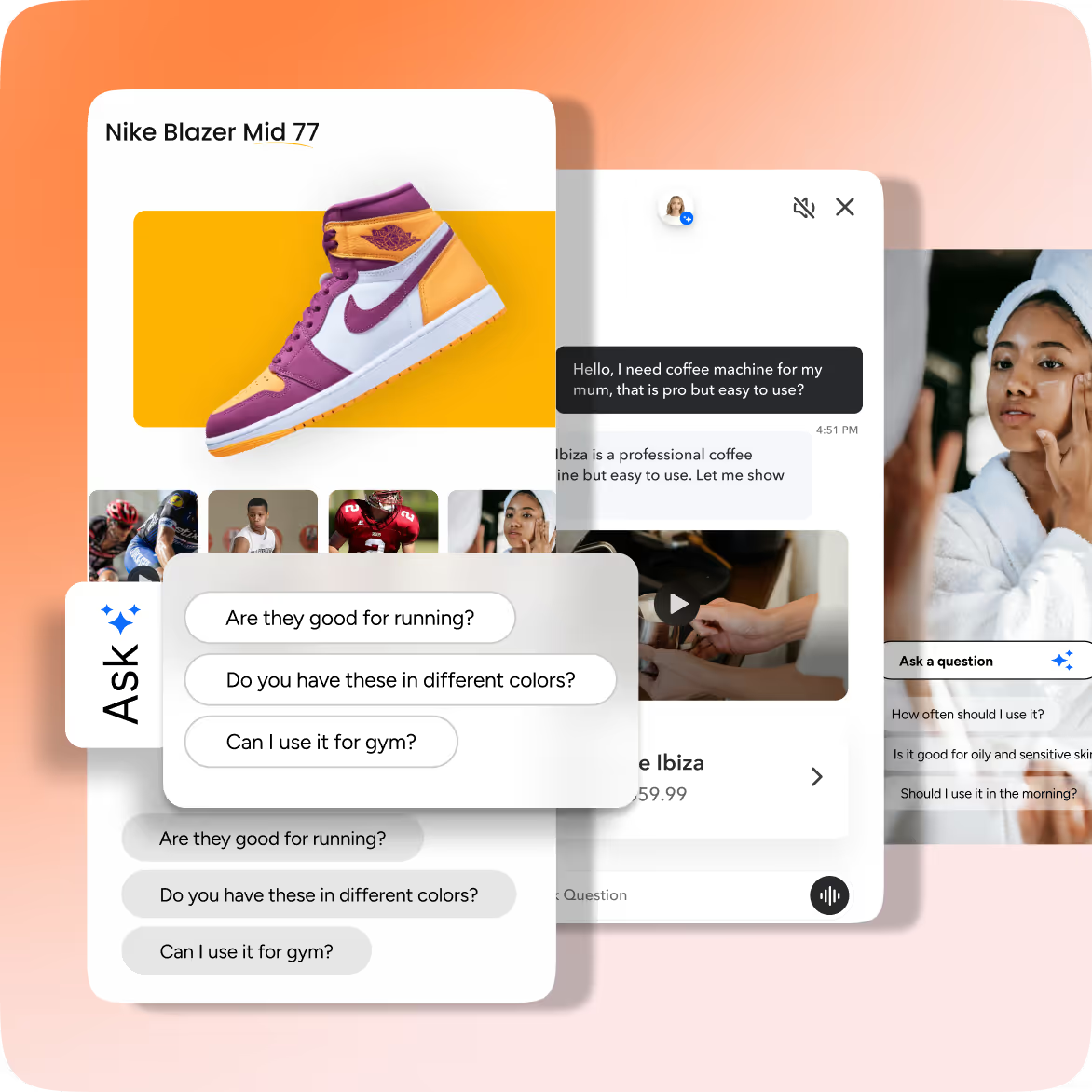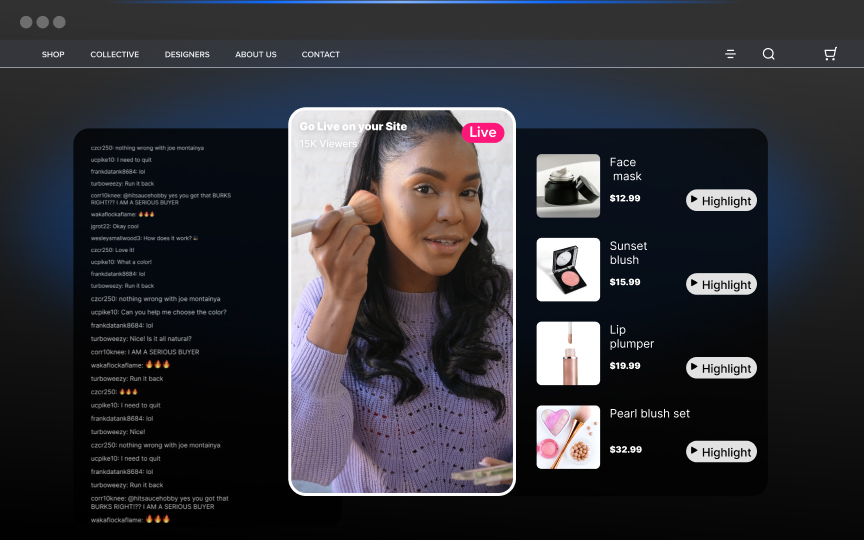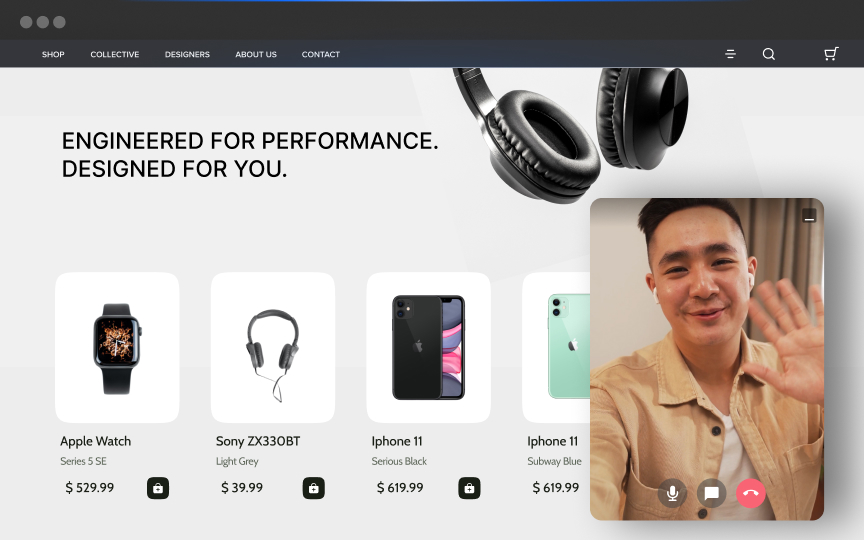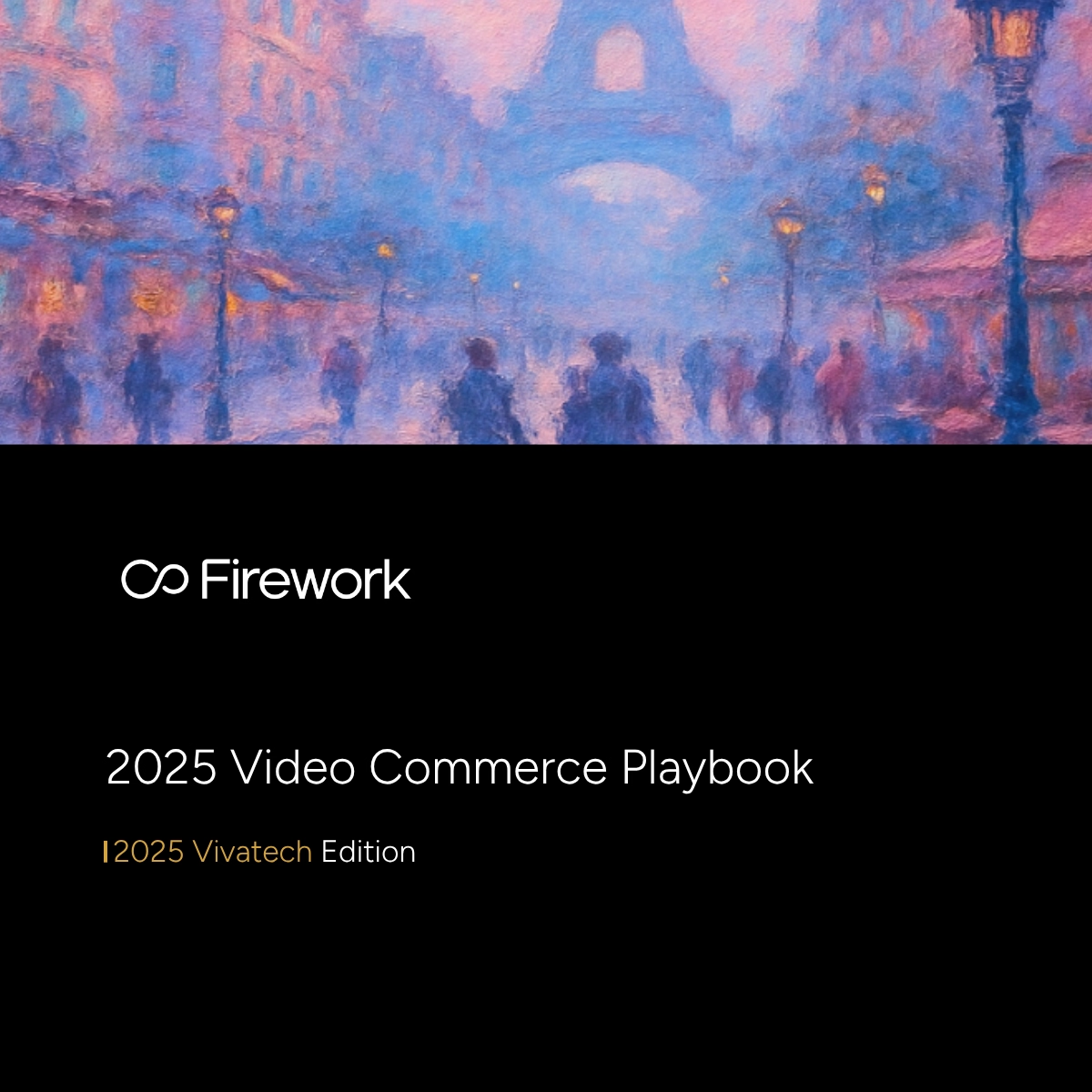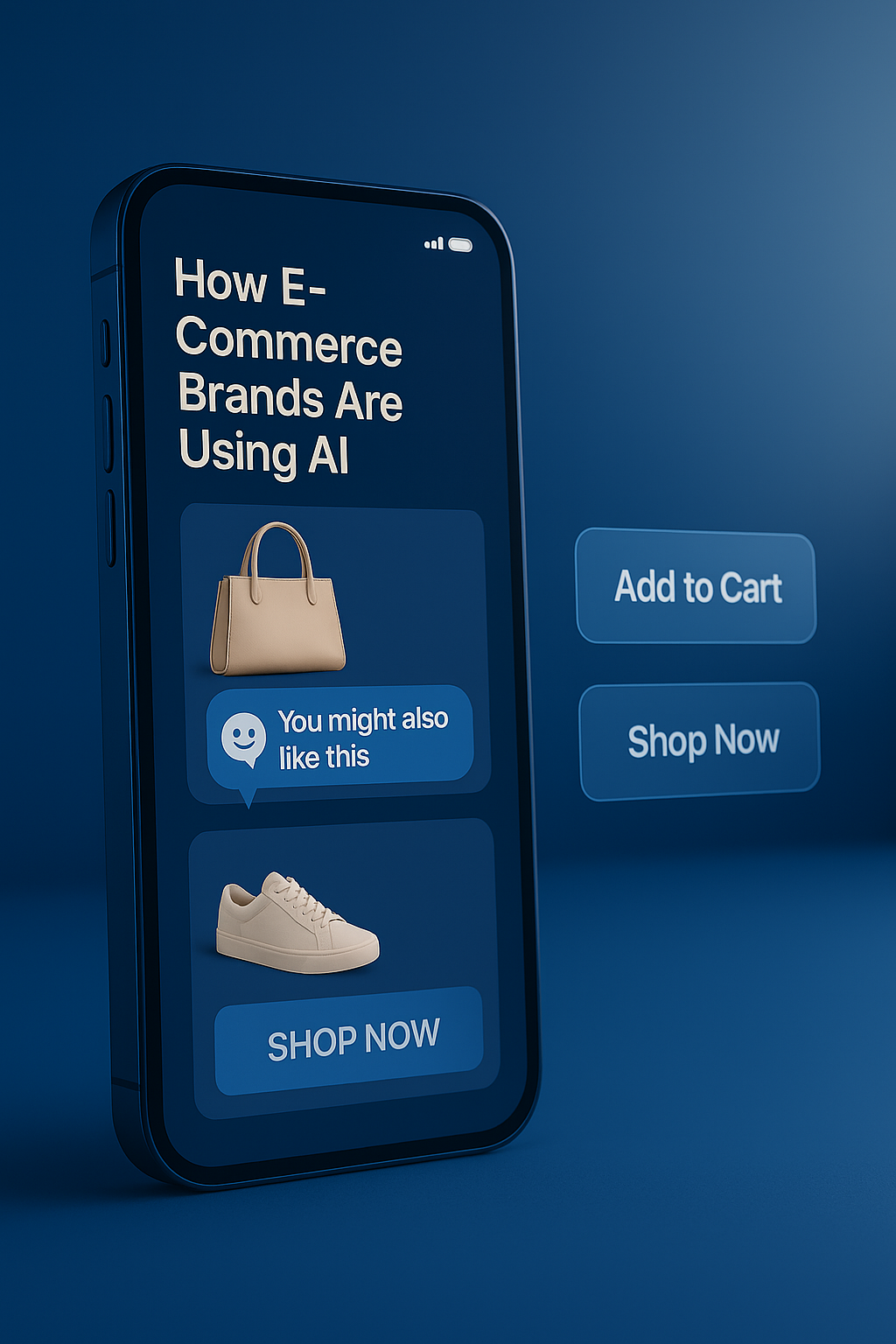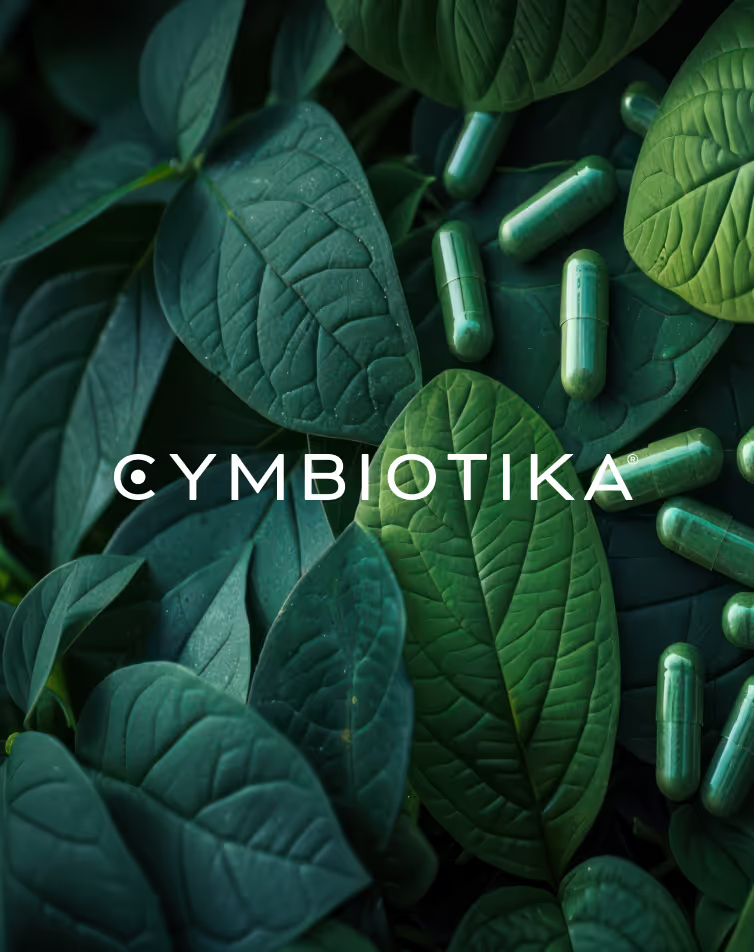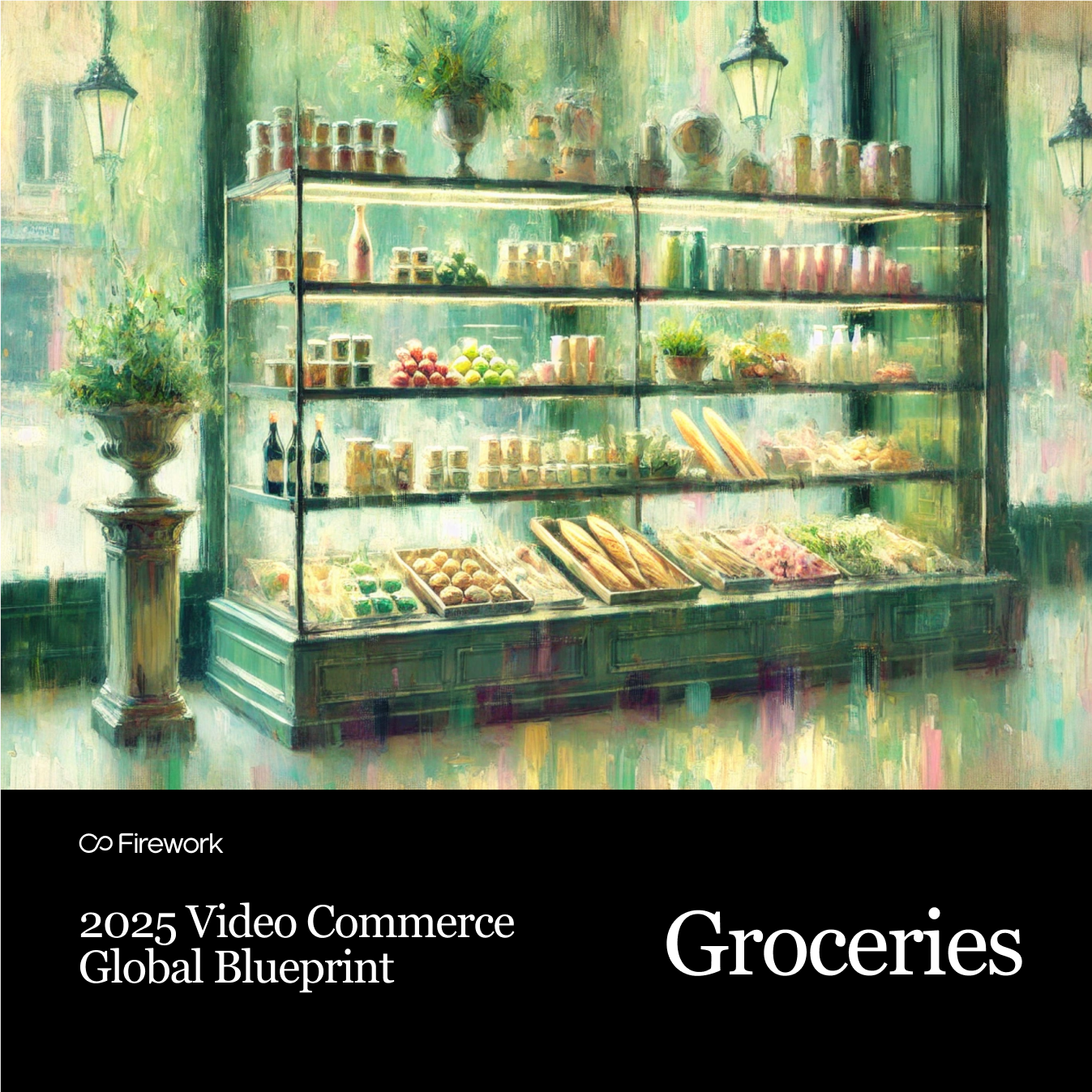In 2025, digital competition isn’t about who has the biggest audience, it’s about who earns the click. Attention spans are shrinking, algorithms are evolving, and consumer expectations have never been higher.
1. Hyper-Personalized Product Recommendations
AI analyzes thousands of data points, from browsing history and search intent to micro-interactions, to predict what each user wants next. Instead of a static “You may also like” carousel, AI-driven personalization delivers one-to-one recommendations that feel intuitive and relevant.
Result: Users are more likely to click because every suggestion feels personally curated.
2. Generative AI for Ad & Email Creative
Generative AI tools are helping marketing teams scale creative production while maintaining personalization. AI can instantly generate ad headlines, visuals, and CTAs tailored to different audiences, even testing multiple variations in real time.
Result: Continuous creative refresh keeps campaigns fresh, relevant, and click-worthy without manual effort.
3. Smarter Search That Understands Intent
Traditional search relies on exact keywords. AI-powered search engines use semantic understanding and context recognition to grasp what a user actually means. For example, a search for “vegan protein snacks” will surface products based on dietary preference, ingredient profile, and past behavior, not just titles.
Result: More relevant search results = more product clicks and higher conversion potential.
4. Predictive Content Placement
AI doesn’t just decide what content to show, it decides when and where. By analyzing behavioral patterns, device type, and time of day, AI can automatically deliver the right creative in the right context. Think: surfacing an “On Sale Today” banner just as a user begins browsing a related category.
Result: Smart placement increases the chance of interaction by catching attention at peak interest.
5. Video Commerce & Dynamic Product Demos
Video is now one of the most powerful drivers of clicks in e-commerce. AI tools can automatically create short, shoppable product videos from static images, complete with captions, transitions, and voiceovers. Paired with interactive video ads or embedded tutorials, brands can show products in action and make every frame clickable.
Result: Video content consistently drives higher conversions than static images.
6. Real-Time Personalization on PDPs
AI enables brands to tailor the Product Detail Page (PDP) dynamically. Everything, from product order to color variant, pricing display, or accompanying UGC, can shift in real time based on user preferences and behavior.
Result: Each visitor sees a version of the page most likely to earn their click, whether it’s “Add to Cart” or “Watch a Demo.”
7. Conversational AI That Converts Curiosity into Clicks
AI chatbots and shopping assistants now go beyond simple support, they guide discovery. Customers can ask open-ended questions (“What’s the best gift for under $50?”) and instantly receive tailored recommendations. These agentic systems turn passive browsing into active engagement.
Result: Conversational experiences drive higher click-through and add-to-cart rates by keeping shoppers engaged in real time.
8. Generative Product Descriptions That Rank and Convert
Generative AI is improving both SEO visibility and engagement. Tools can generate optimized, human-sounding product descriptions that adapt tone by audience, boosting discoverability while encouraging clicks.
Result: AI-authored content helps products stand out in crowded search results and boosts overall CTR.
9. AI-Powered A/B and Multivariate Testing
Traditional testing is slow and linear. AI automates experimentation at scale, testing endless combinations of visuals, headlines, and CTAs simultaneously.
It can predict which versions will perform best and automatically allocate budget to the winners in real time.
Result: Continuous optimization ensures you’re always leading with the creative most likely to earn the click.
10. Predictive Analytics & Continuous Learning
The biggest shift AI brings is self-improvement. Each campaign, impression, and user journey feeds back into the model, teaching it what content, layout, or moment generates clicks.
Over time, this creates a flywheel effect: the more data AI processes, the more precise and effective your CTR strategy becomes.
Result: AI doesn’t just improve campaigns, it learns how to make the next one better.
The Bottom Line: Clicks Are Data, and AI Knows How to Use Them
AI has turned CTR optimization from guesswork into precision science.
Whether it’s generating content, predicting intent, or orchestrating every touchpoint, AI allows e-commerce brands to engage customers with relevance, timing, and creativity that humans alone can’t scale.
The brands winning the click today are those who understand that AI isn’t replacing creativity, it’s amplifying it.
Innovate with Firework
Ready to redefine how your customers shop, engage, and buy? Talk to our team and see how Firework can transform your customer journey.
Frequently Asked Questions
1. How does AI increase click-through rates in e-commerce?
AI increases CTR by personalizing what each shopper sees — from ads and emails to on-site recommendations. It analyzes behavior, preferences, and intent to show the most relevant content, which naturally drives more clicks and engagement.
2. What types of AI are most effective for improving CTR?
The most common include:
- Generative AI for ad copy, visuals, and personalized recommendations
- Predictive AI for timing and content placement
- Conversational AI for real-time shopping guidance
- Recommendation engines that power dynamic, intent-based product suggestions
Together, these systems turn generic campaigns into high-performing personalized experiences.
3. Can small or mid-size e-commerce brands use AI to improve CTR?
Yes. Many AI-driven tools are now accessible and affordable through SaaS platforms. Even small brands can leverage AI for automated creative generation, audience segmentation, and content testing without needing a data science team.
4. How does video commerce impact CTR?
Video content significantly boosts CTR because it allows shoppers to see products in context — whether it’s a demo, tutorial, or influencer recommendation. AI can auto-generate, caption, and personalize videos for each audience, turning every frame into a clickable experience.
5. What’s the role of generative AI in optimizing CTR?
Generative AI helps brands scale creative output and variation. It can instantly produce headlines, images, or product descriptions tailored to different audience segments — then test and refine based on real performance data. This continuous learning loop increases CTR over time.
6. Is AI only useful for ads and marketing campaigns?
Not at all. AI also improves CTR within the site experience itself — on product pages, search results, and even checkout flows. For example, AI can dynamically reorder products or highlight complementary items based on user intent, increasing clicks at every stage.
7. How quickly can brands see results after implementing AI?
Most brands start to see measurable CTR improvements within a few weeks, especially when AI is used for personalization, creative optimization, or dynamic recommendations. Long-term impact compounds as the system learns from ongoing performance data.
8. What are the best metrics to track alongside CTR?
CTR is a great starting point, but it should be analyzed alongside:
- Conversion rate (CVR)
- Add-to-cart rate
- Time on page or video watch time
- Return visitor rate
Together, these metrics show whether higher CTR is leading to deeper engagement and sales.
9. How does AI ensure content doesn’t feel too automated or repetitive?
AI can be trained to mimic your brand’s tone and refresh creative assets regularly. It also uses contextual understanding — ensuring each message feels relevant to the user, not robotic. Combining AI insights with human review maintains authenticity while scaling output.
10. What’s the first step for a brand that wants to use AI to improve CTR?
Start with data. Identify where CTR is lagging — ads, email, or site — then introduce AI where it can have the biggest immediate impact. Even small improvements in creative testing or personalization can create significant gains in click-through and overall engagement.
Unlock Exclusive Insights
By submitting this form, you agree to Firework's privacy policy and consent to receive personalized marketing communications. You can unsubscribe at any time.
